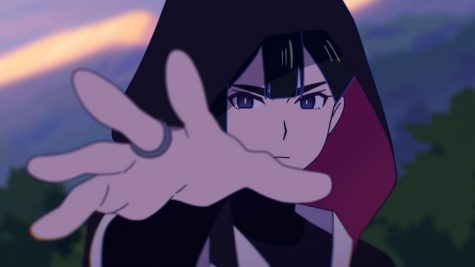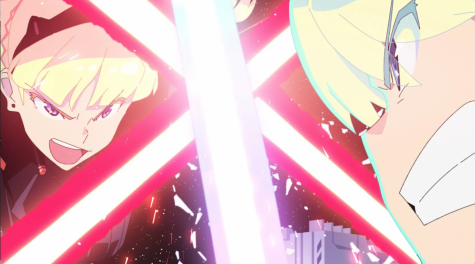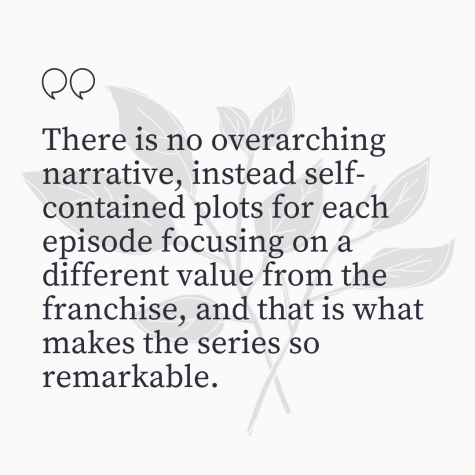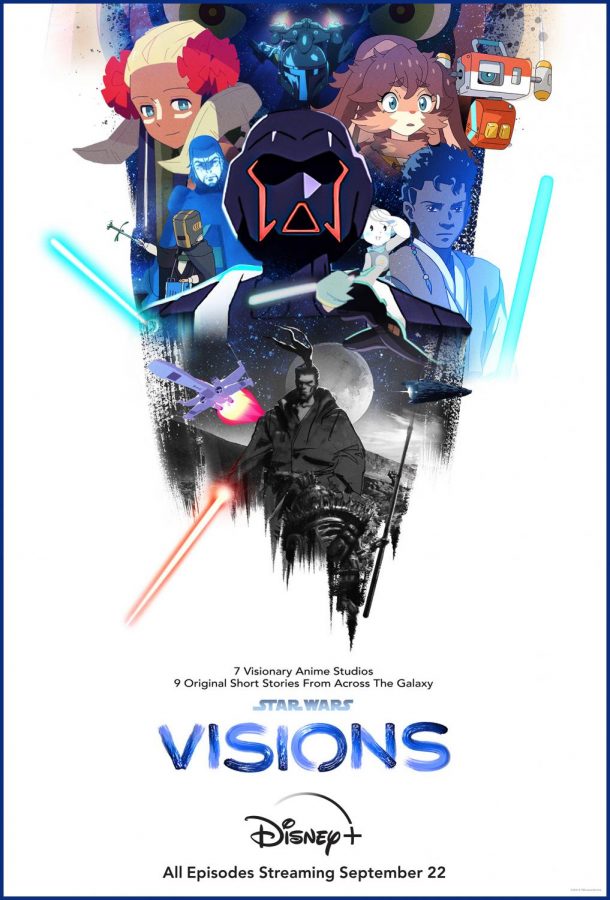‘Star Wars: Visions’ breathes new life into the franchise
The newest Star Wars spinoff breaks all the rules to create a revolutionary anthology anime
“Star Wars: Visions” is an anime anthology series consisting of nine episodes. Photo | Lucasfilm Ltd.
September 30, 2021
ucasfilm followed a new direction for the Star Wars franchise when it collaborated with seven of the largest anime studios, from Kamikaze Douga to Studio Clorido, to create “Star Wars: Visions,” an anime-style anthology series consisting of nine episodes that was released through Disney+ on Sept. 22. The series stars talent including Neil Patrick Harris, David Harbour, Joseph Gordon-Levitt, Simu Liu and Anna Cathcart as voices for its featured characters.

Star Wars comes full circle with “Star Wars: Visions,” with creator George Lucas crediting old Japanese films as a source of inspiration for his original films. The series submerges the franchise into Japanese culture and plays off the connections between cultures extremely well. From lightsabers wrapped in traditional Japanese cloth to droids dressed in straw hats, the series satisfyingly strikes the perfect balance between being distinctly Japanese and the galactic elements of Star Wars.
“Star Wars: Visions” is the first time the franchise has been seen through the lens of anime, and it is breathtaking, to no small credit of the seven anime studios working on the series. Each episode is drawn in a distinguishingly different animation style, with “The Duel,” the first episode being completely black and white and reminiscent of old samurai films, while the sixth episode, “The Twins,” is a technicolor masterpiece arrayed with bright flashes of vivid palettes and angular shadows.

In addition to its stellar animation, every episode in the anthology series is refreshing and distinguishes itself from the other narratives. Each short tells a captivating story, from an animated rock opera on familiar desert planet Tatooine in “Tatooine Rhapsody” to a cautionary tale about the environment in “The Village Bride.”
The backbone of “Star Wars: Visions” is the creative freedom the seven anime studios were given in the stories as a product of diverging from any semblance of the Star Wars canon. Narratives like “Lop and Ochō,” featuring a rabbit-girl who wields a lightsaber to save her adoptive family from the Empire, succeed because of the series’ openness to explore new worlds and find a refresh in the typical formula.
Star Wars, at its core, isn’t the Skywalker Saga, lightsabers or space conflicts, but family, legacy, love, destiny, good, evil and tragedy, which “Star Wars: Visions” upholds through every story. There is no overarching narrative, instead self-contained plots for each episode focusing on a different value from the franchise, and that is what makes the series so remarkable.

Each episode takes a core ideal and reshapes them into undeniably appealing and iconic narratives that capture the limitless feeling of the Star Wars universe, something mediums like “The Rise of Skywalker” and “The Mandalorian” have failed to do with their fixture to an overarching narrative, staying in familiar territory rather than exploring the unknown.
Taking a big risk and allowing seven of the biggest anime studios to break all the rules of the Star Wars franchise resulted in a Star Wars project that is the most true to heart. The stunning visual animation styles, appropriate Japanese homage and revolutionary rewrite of the definition of Star Wars make this incredible anime anthology series a must-watch for any fan of the franchise.
Rating: 5/5



















